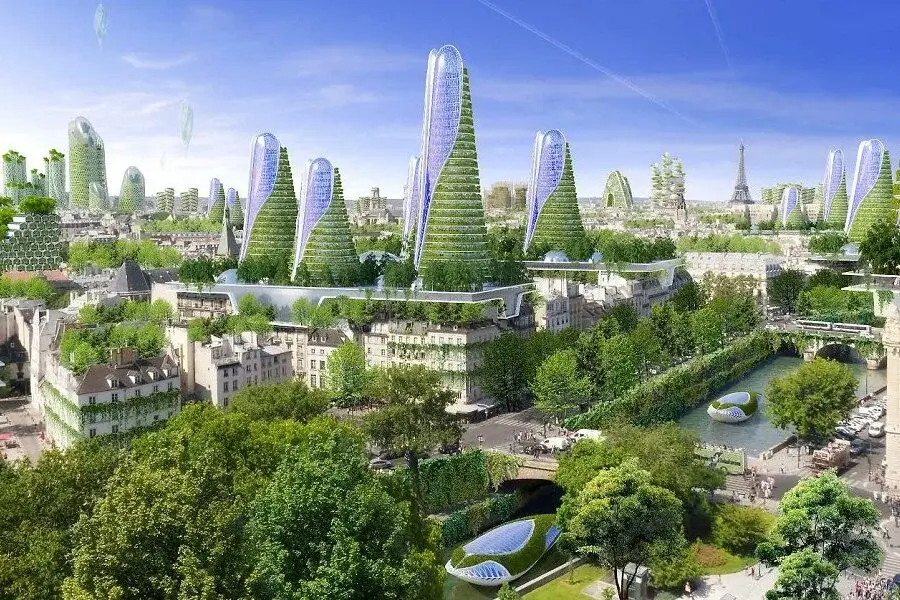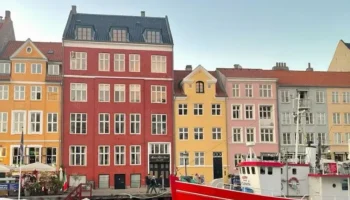While ecocities offer a high-tech approach to urban living, they also raise a question: could they serve as an alternative to villages? As the world grapples with the impacts of climate change and rapid urbanization, the concept of ecocities has emerged as a promising solution for creating sustainable, low-impact urban environments. These cities are designed with ecological principles at their core, integrating renewable energy, green spaces, sustainable infrastructure, and efficient waste management systems to minimize their carbon footprint. With their modern conveniences and environmentally conscious designs, ecocities present a model that contrasts sharply with the slower, more rural lifestyle of villages, which are often rooted in agriculture and a close connection to nature.
However, replacing villages with ecocities is not without its challenges. Villages have long been centers of local culture, social cohesion, and sustainable living practices in their own right, often characterized by low population density and a direct reliance on natural resources.
Transitioning from this lifestyle to the more densely populated, technology-driven world of ecocities would require significant shifts in infrastructure, economy, and community dynamics. This blog post explores whether ecocities, with their emphasis on sustainability and modernity, could genuinely replace the traditional village model—or if a hybrid approach, such as ecovillages, offers a more balanced future.
Ecocities vs. villages
Ecocities and villages, while both can be designed with sustainability in mind, serve different roles and scales within human settlements. Let’s explore how ecocities might serve as an alternative to villages and what challenges or benefits this concept could bring.
What is an ecocity?
An ecocity is an urban environment designed with a focus on ecological sustainability, minimizing environmental impact while supporting the needs of its residents. Ecocities integrate renewable energy, sustainable infrastructure, green spaces, and often focus on reducing waste, water use, and emissions through careful planning. They are typically tech-forward, with a heavy reliance on clean energy, public transportation, and innovative building practices like green roofs or energy-efficient architecture.
Villages: A traditional model
Villages, on the other hand, are generally smaller, more rural communities with a slower pace of life, often based around agricultural or artisanal production. They tend to have a smaller environmental footprint due to their size and more direct relationship with the natural environment, although traditional villages may lack the technological advancements seen in ecocities.
How ecocities could be an alternative to villages
- Sustainability and technology: Ecocities aim to harness technology to create a low-impact lifestyle, integrating renewable energy systems, advanced waste management, and sustainable agriculture (like vertical farms). These innovations could be used to replace traditional village models where reliance on natural resources could be unsustainable.
- Urban density vs. rural living: Ecocities, by design, support higher population densities. This might solve some issues related to village life, such as limited access to services, education, or healthcare. A village transitioning into an ecocity could provide its residents with these urban advantages without sacrificing ecological balance.
- Infrastructure and economy: Ecocities offer modern infrastructure that encourages walkability, public transport, and digital economies. While villages typically rely on localized and often agriculture-based economies, an ecocity can diversify employment opportunities, attracting remote workers or businesses that thrive in green technology industries.
Challenges of replacing villages with ecocities
- Cultural and social shift: Villages often have deep-rooted traditions and ways of life that are hard to translate into the urban structure of an ecocity. The pace of life, community interactions, and farming practices would all be drastically altered.
- Cost and feasibility: The technological and infrastructural investments required for ecocities are significantly higher than for traditional villages. Transitioning an existing village into an ecocity would require massive capital, not always available in rural areas.
- Population size: Villages are designed for smaller, tightly-knit populations. Ecocities, while sustainable, are still cities designed for larger populations. It is unclear how well ecocity models scale down to village-sized communities.
Hybrid approach: Ecovillages
One practical middle ground is the concept of an ecovillage. Ecovillages are intentional communities designed to be socially, economically, and ecologically sustainable. They often combine the community-focused, small-scale aspects of traditional villages with ecologically sound practices, such as permaculture, renewable energy use, and local economies. Ecovillages blend the best of both worlds: the ecological benefits of an ecocity on a village scale.
To conclude, while ecocities present an exciting vision for sustainable urban living, they may not be a one-size-fits-all solution for replacing traditional villages. The cultural richness, slower pace of life, and deep connection to nature found in villages are aspects that may not fully translate into the highly structured, technology-driven frameworks of ecocities. Instead of viewing ecocities as a replacement for villages, it may be more productive to explore hybrid models like ecovillages, which combine the ecological benefits of modern technology with the communal values and simplicity of rural living. Ultimately, the future of sustainable human settlements may lie in embracing both innovation and tradition, creating diverse solutions that cater to different needs and lifestyles.





